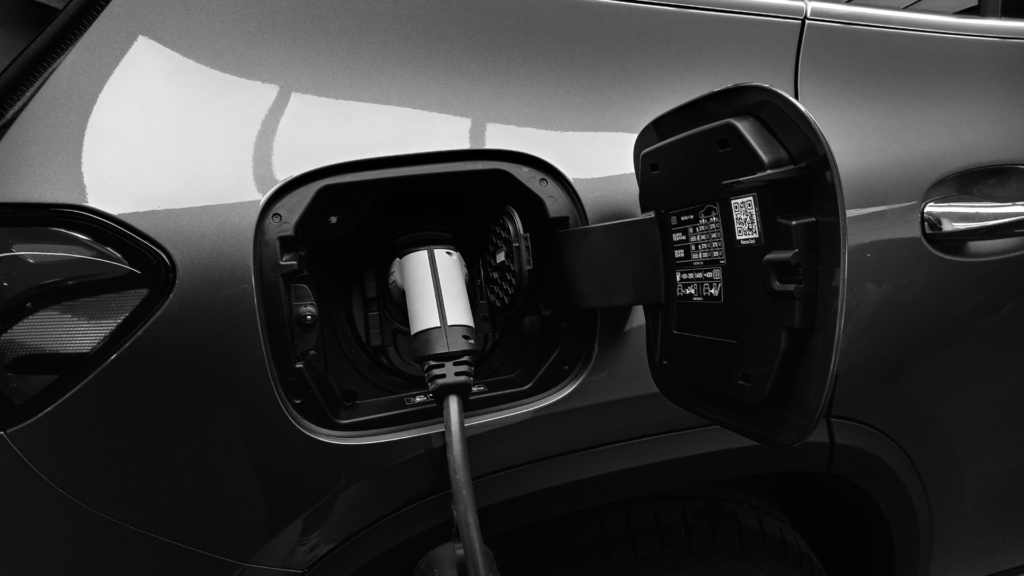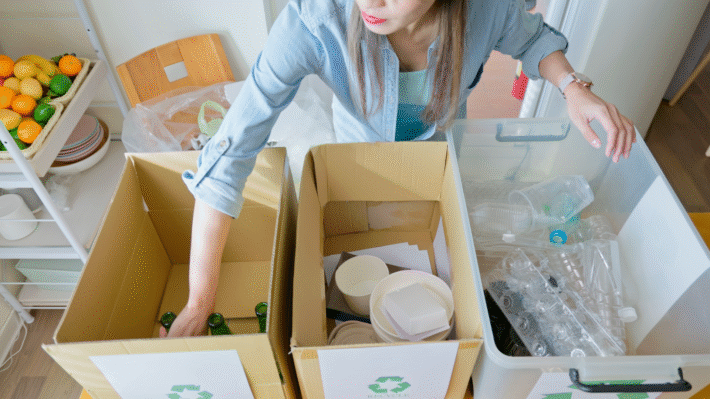Optimizing EV Battery Lifespan to Promote Sustainable Material Recovery & Circular Supply Chain

Welcome to the thrilling world of EV Battery Circularity! Picture a glittering future where electric vehicle batteries have their lifecycle amped right up and used materials are put back in the game, instead of landing in landfills. Exciting, right? It’s not just utopian daydreams, folks! This is about making the ever-increasing adoption of electric vehicles both earth and resource-friendly. We’re treading into a territory where even waste shines with opportunity—a second wind for used batteries and efficient resource recovery that’s smooth as a dream, backed by advanced recycling technologies. And don’t forget the powerhouse role of AI or potential of circular business models, nudging sustainability onto the fast lane. Get buckled in, because we are ready to cruise through the ins and outs of creating circularity in the EV battery end-of-life supply chain. Let’s start this electrifying journey towards extending battery lifespan and optimizing material recovery, shall we?
Introduction to EV Battery Circularity
Welcome aboard, everyone! I’m here to share some extraordinary insights into this cool thing called “EV Battery Circularity.” It’s about extending the life of electric vehicle batteries and optimizing the recovery of the materials in them.
Understanding Circularity in EV Batteries
The Importance of Circularity
Let’s start with the “circularity” part. What’s that all about? Well, let me break it down for you. Imagine if you could wear the same shirt over and over again without it ever wearing out. Sounds fantastic, right? That’s what we’re aiming for with EV batteries. We want them to last as long as possible, and when their time’s up, we want to make the most out of the materials in them.
Circularity isn’t just good news for your wallet. It’s also good for our planet! By reusing materials, we help minimize waste and reduce the need for mining new resources.
Current Challenges in Battery Waste
Now, you might be thinking, “That sounds fantastic, but why isn’t everyone doing it?” Fact is, we’re facing some pretty big challenges. As more people switch over to electric vehicles, we’re ending up with heaps of old batteries that we don’t know what to do with. Plus, the valuable materials locked inside these batteries often end up in the trash instead of being recovered for new uses.
Goal of Creating Circularity
We’re not letting these challenges discourage us though. Our goal is to extend the lifespan of EV batteries and to make the most out of the materials in them. Here’s how.
Extending Battery Lifespan
Boosting a battery’s lifespan isn’t just about treating it nicely (though that helps). It’s about smarter systems that can manage battery health like high-tech doctors, creative designs that heal themselves (really!), and clever customer education. We’re even exploring ways to make saving energy fun—sort of like a game!
Optimizing Material Recovery
When it comes to recovering materials from old batteries, we’re looking to the future. We’re researching innovative recycling methods, designing batteries with recycling in mind (if only everything were this thoughtful), and finding ways to ensure valuable materials stay in the loop and get reused.
In the exciting world of EV battery circularity, everyone’s a winner. We get to enjoy our electric vehicles for longer, squeeze out the most value from their batteries, and do our part to keep our planet tidy. It’s all about giving old batteries a new lease on life while going easy on our beautiful planet! Nice, right? Stay tuned for more!
Extending EV Battery Lifespan
Give your EV (Electric Vehicle) battery a long, healthy life! Nope, it doesn’t require rocket science but a clever mix of smart systems and wise choices. Let’s rev into it!
Smart Battery Management Systems
Think of these as the brains behind your battery. They monitor and control key parameters like voltage, current, temperature and the charge state. Now, these terrific thinkers also play two crucial roles:
Role of Predictive Maintenance
Imagine your battery giving you a heads-up before it breaks down. That’s exactly what these nifty systems do. They use data from ongoing operations to predict possible issues in advance. This can help prevent damaging events to the battery and avoid “surprises”. In short, it means saving a dime while saving the time!
Battery Health Monitoring
Just like we need regular health checks, so does your EV battery. Smart BMS offers real-time battery health stats. This helps to prevent over-charging or draining. Keeping your battery’s health in top form helps extend its lifespan and keeps your ride smooth!
Optimal Charging Practices
No, it’s not just how long you charge your EV, but also how and when you charge it.
Importance of Temperature Control
Batteries love mild climates, just like we do! Extreme hot or cold can affect the battery’s performance and life. So, keep your EV battery in a happy temperature zone whenever possible. Remember, it’s your battery’s comfort that counts!
Benefits of Slow Charging
I get it, fast charging sounds tempting but slow and steady wins the race here. Slow charging limits stress on the battery, thereby prolonging its life. Don’t hurry, charge wisely!
Advanced Battery Designs
Better design, longer lifespan. It’s that simple and here’s how:
Self-Healing Components
These futuristic parts can identify small damages and fix themselves. Just like magic, but better – it’s science!
Innovative Materials
Researchers are constantly hunting for new materials to boost battery life. Safer, performance-rich batteries are the future and they’re coming to us!
Driver Education and Engagement
Here’s a fun fact: You, as a driver, hold tremendous power in extending battery life.
Gamification of Efficient Usage
Manufacturers intentionally design engaging games encouraging efficient driving habits. Win points while saving power!
Impact of Driving Habits
From speedy Gonzales to slow and steady Toms, driving styles make a huge difference. So ease that foot off the accelerator, brother, consistent moderate speed helps extend battery life.
In a nutshell, extending EV battery lifespan is about smart systems, individual habits and embracing new tech. Here’s to a future where the longevity of EV batteries is a concern of the past! Let’s drive towards it!
Second-Life Applications for EV Batteries
Electric Vehicle (EV) batteries are a treasure trove of reusable materials and energy. When their first life — zipping cars around town — comes to an end, they’re far from dead. It’s like retiring from a career in high-speed athletics to become a slow-and-steady marathon runner. Let’s dive into how this second life takes place.
Grid Storage Solutions
Stationary Energy Systems
One popular solution is to use EV batteries in stationary energy systems. That fancy way of saying that they get a cozy new job storing power for households, offices, factories, and even whole neighborhoods. For example, a retired EV battery could store solar power throughout the day and then come alive at night, lighting homes even after the sun goes down. Could there be a better retirement plan?
Integration in Microgrids
These second-life EV batteries are also perfect team players in microgrids. Microgrids are like little islands of electric power. They can work independently when there’s trouble in the main power grid. Retired EV batteries fit right into these systems, providing valuable storage capacity and helping to balance energy demand and supply. It’s like being a goalie in a big soccer match ensuring no power outages score a goal against the microgrid.
Industrial and Urban Applications
Backup Power for Industry
Industries are like the big kids on the electrical block. They consume a lot of power and a sudden power outage could mean terrible losses. Here comes our retired EV battery, heroically providing backup power and giving industries a reliable safety net. You see, even after retirement, these EV batteries are far from settling on a porch rocking chair!
Urban Infrastructure Support
City life relies heavily on energy — traffic lights, public transportation, hospitals, and so forth. Each of these can benefit from retired EV batteries. They can provide backup power to keep traffic lights running, support electric buses, or ensure hospitals have no power interruption. From their swanky job in fancy cars, retired EV batteries turn into silent heroes adding resilience to our urban life.
A second life for an EV battery isn’t just about extending its lifespan. It’s about going beyond linear use and embracing the circularity of resources. A win for budget, a win for energy resilience, and a huge win for the planet!
Optimizing Material Recovery
We’re in the race of our lives, folks! To keep our planet healthy and preserve resources, we’ve gotta coax every last bit of goodness out of those EV batteries. It’s not just about making ’em go; it’s about recycling them right!
Advanced Recycling Techniques
Hydrometallurgy and Pyrometallurgy
Ever mixed baking soda and vinegar? It’s a tiny taste of hydrometallurgy, using liquid chemistry to extract stuff – it’s perfect for pulling out valuable metals. Then there’s pyrometallurgy, about as simple as roasting marshmallows except, well, we’re roasting batteries to separate useful metals. But beware, it can be a touch more fiery than your campfire!
Direct Recycling Methods
Direct recycling is like taking apart a LEGO set, bit by bit. We’re separating the pack, extracting the good stuff (like metals), and giving them a proper makeover before they jump into their second coming as a brand, spanking new battery.
Technology in Recycling
AI-Powered Sorting
Sortin’ this stuff ain’t simple, so we’re looping in AI. Imagine a super smart robot! It’s scurrying through the recycling pile, picking out batteries based on materials, type, or even manufacturer. A nerdy but exceedingly handy helper, ain’t it?
Automated Disassembly
Automated disassembly, kind of like a pit crew at a car race. But instead of patching up the car, they’re tearing apart batteries faster than a kid unwrapping candy. It’s fast, it’s efficient, and goodness, it’s marvelously precise!
Design for Recyclability
Standardized Components
Standardized components, folks, is like nailing the exact recipe of grandma’s apple pie, every single time. Same ingredients, same design, same process, easier to make – and easier to take apart when the time comes. It’s a recipe for battery recycling success.
Closed-Loop Materials
We’re thinking ahead with closed-loop materials – ensuring everything we use to make a battery today, gets a second shot at life tomorrow. It’s all about playing a game of “keep away” with the waste dump and minimizing our tap on Mother Earth’s precious resources.
Hey, old batteries ain’t rubbish! And although it might sound a messier prospect than arranging a sack race at a hen party, trust me, all this end-of-life supply chain hustle’s gonna keep our good old rock in the cosmos smiling green and clean for a good while longer. Now ain’t that a convenient truth worth tackling?
Circular Business Models in the EV Battery Sector
As we charge forward in the awesome electric vehicle (EV) revolution, it’s time to take a pit stop and think about where our expended batteries end up. Today, we’re diving into the innovative world of circular business models in the EV battery sector.
Battery-as-a-Service (BaaS) Models
My friends, let’s start with the cool concept of “Battery-as-a-Service” (BaaS). Imagine you never had to worry about your battery’s lifespan again! BaaS is designed just for that.
Leasing and Subscription Options
In the BaaS model, batteries are leased or subscribed to, rather than purchased outright. Think about it like a Netflix subscription, but for your EV’s battery! You enjoy your ride, and when the battery starts to lose its juice, you get it swapped out for a fresh one.
This model drastically extends battery life, as batteries are meticulously maintained and replaced at optimal times. Plus, it takes the burden off your wallet – no more unexpected battery replacement fees or maintenance costs!
Reverse Logistics Processes
Then comes ‘reverse logistics’. It’s not as complicated as it sounds. It’s simply the practice of planning and executing the efficient, cost-effective flow of materials, in-process inventory, finished goods, and related information from end-user to origin for the purpose of recapturing value or proper disposal. In the BaaS context, this means making sure old batteries can be easily returned, refurbished, or properly disposed of.
This smooth transition from consumer back to the manufacturer completes the loop in a battery’s lifecycle, saving valuable resources and minimizing waste.
Collaboration and Infrastructure
Alright, let’s shift gears and look at the second half of the equation – effective collaboration and solid infrastructure.
Blockchain Tracking Systems
Firstly, blockchain isn’t just for cryptocurrencies anymore! This technology has the potential to revolutionize our approach to tracking batteries throughout their life cycles. With a secure, decentralized ledger, we can trace batteries from the factory floor to the recycling center with ease, ensuring that no battery falls through the cracks.
Joint Recycling Initiatives
Finally, let’s consider the moment when our EV batteries reach the end of the road. With joint recycling initiatives in place, battery makers, automakers, and recycling companies collaborate to retrieve valuable materials from old batteries. This shared effort lessens the impact on any single entity and drives us towards a more circular economy.
So, folks, by embracing these circular business models, we can ensure that EVs are not only revolutionizing transport, but doing so in a way that’s truly sustainable, economical, and visionarily green! Don’t you just love being part of this awesome ride towards a greener future?
Innovative Technologies Driving Circularity
As we step into the brave new world of EV battery circularity, tech wizards around the globe have been cooking up some impressive innovations. Let’s dive headfirst into the future and see what it holds!
Emerging Technologies in Recycling
One part of the circular equation deals with how to recycle our defunct batteries in the smartest, most efficient way.
Role of Digital Twins
Say hello to the ‘Digital Twin‘. No, it’s not a sci-fi blockbuster. This cutting-edge concept refers to a digital replica of physical assets and processes. In layman’s terms, it’s like having a virtual double of real-world objects. Using this “twin”, scientists can analyze and optimize the recycling process. They can test out different methods, spot potential flaws and solve issues… all without touching a single real-life battery! Digital twins allow us to create the best recycling process without the trial-and-error stage.
3D and Additive Manufacturing
Another game-flowing move comes in the form of 3D and Additive Manufacturing. Picture this: the used material from old EV batteries being ‘printed’ into new useful products. Too sci-fi? Well, it’s looming on the horizon. We’re talking about turning waste into worth, reusing what was once thought useless. These technologies can revolutionize how we deal with ‘end-of-life’ batteries, turning doom into boom!
Quantum Computing for Discoveries
While 3D printing takes care of the old, we’re making headway on the new too.
Material Discovery Breakthroughs
Quantum computing is expected to play a superstar role here. This supercharged computing power can help scientists explore and invent new materials quicker than ever. It’s like fast-forwarding through millions of chemical combinations to find the perfect match for our battery needs. And the best part? These findings keep our EV batteries cleaner, more efficient, and longer-lasting.
Tech innovation is the magic wand waving us into a more circular and sustainable future. With the combined forces of digital twins, additive manufacturing, and quantum computing, we’re beginning to turn the EV battery challenge from an environmental horror story into a Cinderella tale of sustainability.
Policy and Regulation Impacting Battery Circularity
Alright, let’s march on folks! Scoot over to the business end of things- policy and regulation. These two bodyguards, let’s say, govern how things work (or don’t work) in battery circularity. Buried within are a couple of key regulations you should be aware of.
Extended Producer Responsibility (EPR)
Mandates and Regulations
Imagine if makers of EV batteries were responsible for their ‘babies,’ not only when they’re shiny and new but also when they’re old and tired. That’s what Extended Producer Responsibility is all about. It saddles manufacturers with the responsibility for the environmental impact of their products, throughout the product lifecycle, and especially at the end of life. From design and production to collection and disposal, they oversee the whole shebang. And why not? They laid the first brick; they should be around for the last.
This idea isn’t just coming out of the blue; it’s part of a slew of mandates and regulations being put in place worldwide. Producers are being nudged gently (or forcibly, depending on where you are) to include EPR in their plans and designs.
Tax Incentives and Agreements
As painstaking as EPR might seem, it isn’t all doom and gloom for producers. Look out for some good old tax incentives and agreements. These sweeteners are designed to edge producers into the exciting world of EPR, offering a ‘carrot’ for following sustainable practices.
Public-Private Partnerships
Hang on to your hats, boys and girls. We’re switching gears to a biggie – Public-Private Partnerships. Forget the long name, these partnerships or PPPs can be pretty powerful buddies in achieving circularity.
Role in Circular Economy
Finding it tough making heads or tails of how PPPs fit into the circular economy? Let me break it down. Governments and businesses need to shake hands and walk together. They can collaborate on technology, infrastructure, financing, and whatnot! So you see, PPPs can play a crucial task in speeding up the transition to a circular economy, making it smoother (and probably less painful too).
Setting Industry Standards
Lastly, PPPs can shape industry standards in EV battery production and recycling. They’re like trendsetters, setting the pace for how things should be done in a way that’s environmentally friendly and economically smart.
There you go folks, a set of beautiful principles that can change the game in battery circularity! It’s a bumpy road but with the right policy and regulations, along with a spritz of innovation and a whole lot of cooperation, we might just make it work!
Benefits and Challenges of EV Battery Circularity
“There are no gains without pains,” as Benjamin Franklin once said. That quote couldn’t be more spot on when it comes to creating a circular supply chain in the EV battery industry. What’s the scoop, you ask? Let’s dive in and explore the benefits and hurdles of EV Battery Circularity.
Advantages of Circular Supply Chains
Folks, picture this, a world where our precious Earth’s resources aren’t constantly being depleted. Sounds fantastic, right? Well, guess what? With EV battery circularity, that idyllic picture could become a reality. Let’s discover how this is possible.
Resource Conservation
When we say “resource conservation”, we don’t just mean reducing the environmental footprint. We’re talking about fewer trips to the mines, fewer materials needed, and a much smaller waste footprint. Imagine not burning through those precious lithium, cobalt, and nickel reserves just to keep the lights on. It means we’re taking the ‘make, use, dispose’ model and throwing it in the trash. Instead, we make, use, recycle, and REUSE. Kind of like a never-ending merry-go-round of material recovery.
Reduction in Emissions
And let’s not forget the elephant in the room – emissions. Circular supply chains are just the ticket to cut down on those nasty greenhouse gases. With fewer resources being mined, processed and transported, the CO2 output is greatly reduced. That’s a win for everyone!
Challenges in Implementing Circularity
Now, here’s the rub: there’s no sugar-coating it, there are hurdles on this road to a circular supply chain. But, knowing the challenges, gives us ammunition to tackle them head on.
Technological Obsolescence
First off, let’s face it, technology is dropping new gizmos and gadgets on our laps faster than we can blink. This speedy pace can lead to EV batteries becoming outdated before they even hit the recycling stage, or the materials they contain being rendered useless by a new tech development.
Economic Viability Issues
Another pickle is the question of whether it all makes cents…I mean sense. The costs to set up recycling infrastructure, redesign batteries, and implement new business models can make bean counters break into a cold sweat. But here’s the deal, focusing on the short-term costs blinds us from the long-term benefits – both financial and environmental.
Folks, I ain’t pulling any punches here. Creating circularity in the EV battery end-of-life supply chain is not a walk in the park. But with the potent benefits and the promise of a sustainable future, I say – Bring. It. On.



